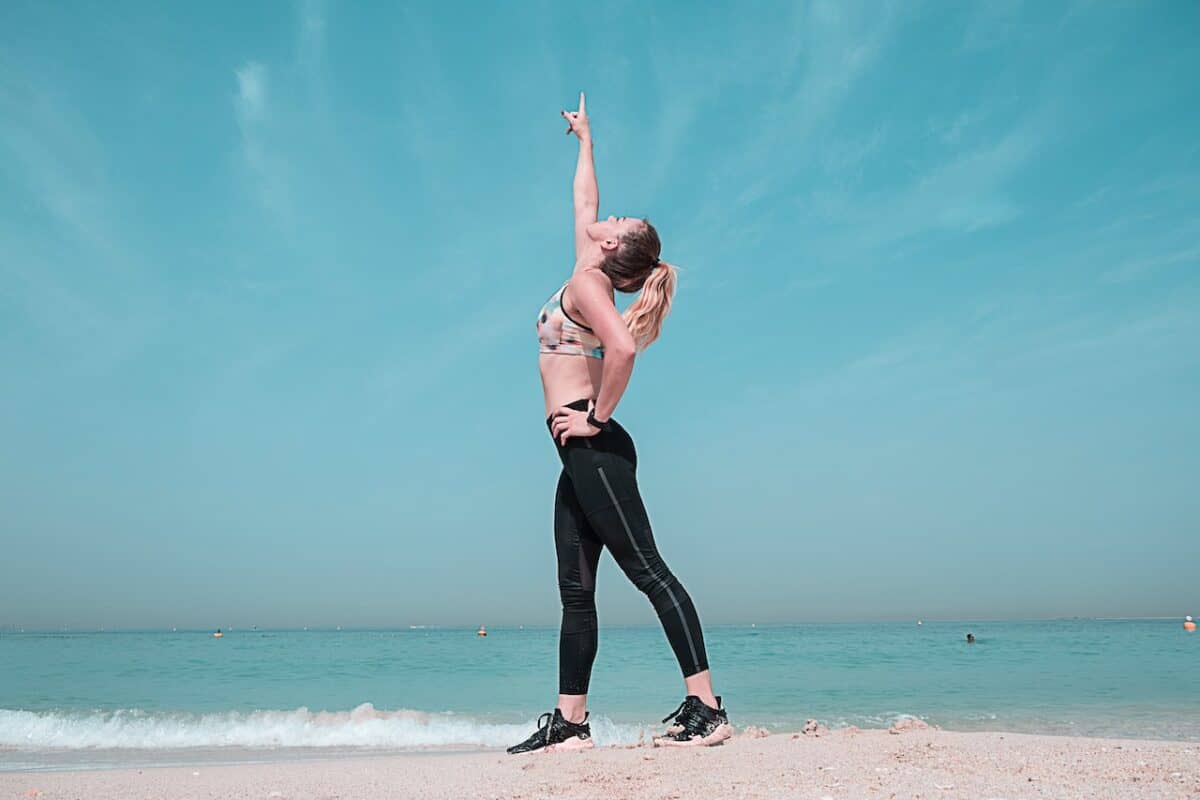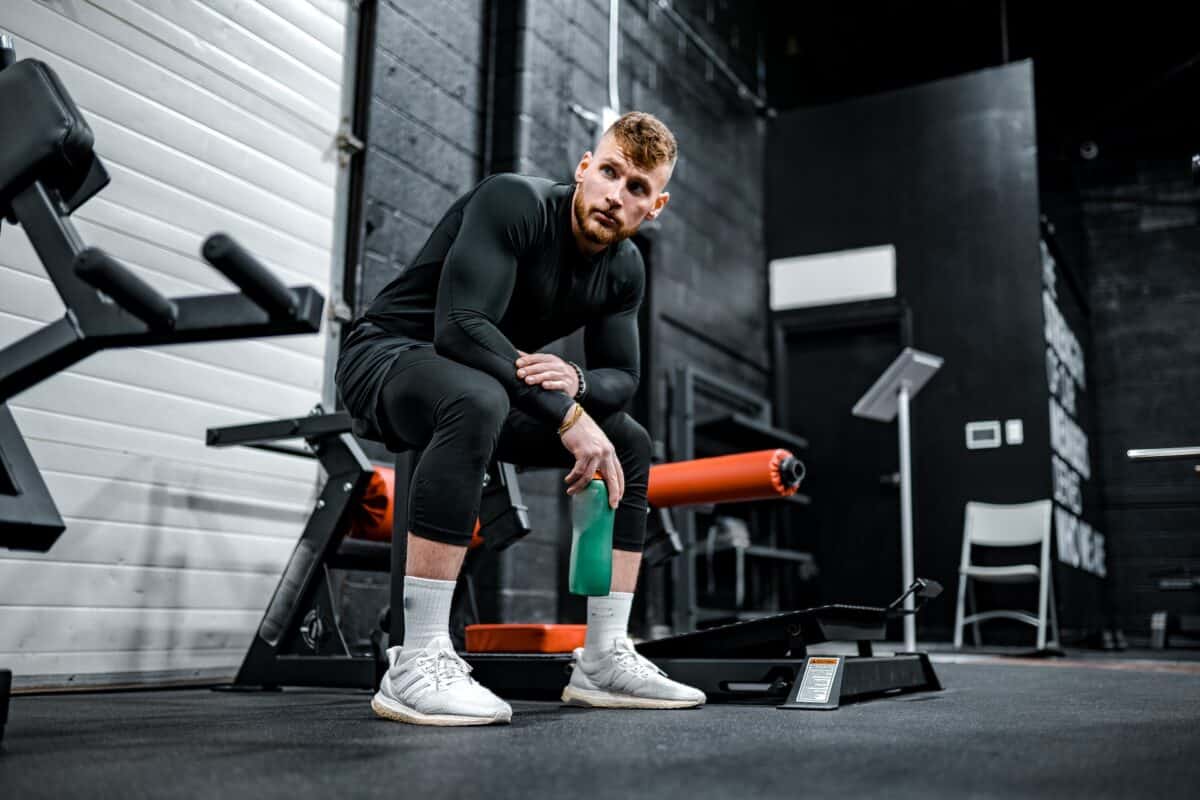Compression pants and leggings are stretchable garments you can wear when going for workouts and sports. With the following compression pants vs. leggings guide, you will discover the best moisture-wicking and breathable bottom-wear that can keep you sweat-free and comfortable throughout the workout session.
Contents
Compression Pants vs Leggings General Overview
Compression pants and leggings share a lot in their design and fit, and many use the names interchangeably. It can be challenging to differentiate the two, especially if they don’t come with a descriptive tag. However, they are different attires designed to serve different purposes.

Compression Pants Overview
Compression pants, also known as compression leggings or tights, are tights designed to compress your muscles and keep them contained and supported. They also help compress the blood vessels and improve blood circulation.
Leggings Overview
Leggings are a form of skin-tight bottom-wears that covers the legs up to the waist. They are generally made of elastic fabrics that make them fit. Instead of a belt, leggings usually come with a waistband that helps to hold them in place.
Typically, leggings are versatile, and you can wear them with a wide range of outfits, making them one of the most popular bottom-wears.
Comparing Compression Pants and Leggings
Both leggings and compression pants are comfortable skin-tight bottom-wears that you can wear when going for workouts or sports. However, they have some design and elasticity differences that make one a better option than the other in some situations.
Comparing Compression Pant vs Leggings Features
| Features | Compression pant | Leggings |
|---|---|---|
| Compression | High | Medium |
| When to wear | Intense workouts | Day to day |
| Texture | Smoother | Smooth |
| Fabric | Nylon and spandex | Cotton, fleece, polyester and nylon |
Similarities
Although leggings and compression tights are made from different materials and for different purposes, the following similarities between the two create a gray area, and you might even consider wearing them interchangeably when going for workouts.
- Opaqueness: Although compression tights tend to be thicker than leggings, both are made of considerably thick materials that are not see-through. However, both of them can show the pantie lines
- Length: Both can come in Capri length, ⅞ length, or full length. Typically, Capri length extends below the knee and ends at around the mid-calf area, ⅞ length extends below the calf and ends right above the ankle, while the full length extends to all below the ankle.
- Colors and patterns: Both bottom-wear can come in various colors and patterns. However, regular leggings tend to have more colors and patterns due to their popularity and sheer number in the market
- Care: Although they are made with different materials, both bottom-wears come with almost the exact care instructions, such as washing using delicate settings and not drying them with the drier
- Outfit: Although compression tights tend to be tight and more fitting than regular leggings, both are elastic and fitting. This means both can reveal your curves or pantie lines, and you might need to wear them with a dress or long shirt that can cover the butt area.

Differences
Although the two skin-tight garments may look the same in color, pattern, and length, they have the following differences in design, material, versatility, and thickness.
Fabric
The fabric plays a vital role in the overall elasticity and comfort of the garments. Leggings come in a wide range of fabrics, layers, and linings.
For instance, leggings made to add warmth during the cold weather feature cotton, wool, or fleece fabrics and linings, while leggings made for summer or workouts might come with a polyester fabric. Usually, these fabrics contain some percentage of spandex to help add elasticity.
On the other hand, compression leggings are meant to be stretchy and tight-fitting. As a result, most of these pants are made of knitted nylon and spandex. Typically, the silky nature of nylon helps improve the fabric’s smoothness and comfortability during rigorous workouts. The percentage of spandex in tight compression fabrics is also higher, at around 25%.
Versatility
Since leggings are designed for day-to-day use and come in a wide range of fabrics, they are more versatile. For instance, there are thick leggings made of cotton and minimal levels of spandex. These leggings are less fitting and might not reveal your curves as much, and you can wear them as formal attires at the workplace.
Also, there are leggings designed for sports and workouts, with around 8% spandex and 92% polyester. Such leggings are comfortable and stretchy, and some might even have compression zones to promote muscle recovery after workouts.
On the other hand, compression leggings are specifically designed to support muscles and improve blood circulation, making them less versatile. Usually, compression tights have compression zones. They fit tightly on your body and reveal your curves. That means you might not wear these pants at the workplace or when attending formal settings.
Major Distinguishing Factor
The main distinguishing factor between compression tights and leggings is their purpose. Regular leggings are designed for daily use, such as when running errands in town, walking in the park, going for workouts, and wearing casually at home or even formally at the workplace.
On the other hand, compression tights are designed to help support the muscles and improve blood circulation to reduce muscle soreness and fatigue during athletics and intense workouts or for specific medical reasons such as treating varicose veins and deep-vein thrombosis.

When to Wear Compression Pants
Considering that compression leggings support and contain the muscles to improve the blood flow, they are the best to wear in the following situations:
- During intense workouts where you might want to reduce muscle cramping and fatigue
- If you are suffering from varicose veins and deep vein thrombosis, and you want to improve blood flow in your legs
- You can wear them after rigorous activities that might have left your muscles with microscopic tears as the compression puts the muscles together and accelerates recovery.
- If your work involves prolonged standing or sitting, the improved blood circulation helps to prevent possible headaches or swollen legs.
- If you feel insecure about loose clothing, wearing compression leggings can help boost your confidence and prevent distractions when working.
When to Wear Leggings
Since regular leggings are more versatile and come in a wide range of colors and patterns, they are the best to wear under the following circumstances:
- You can wear the gray or black full-length leggings as formal attire when attending events such as weddings or at the workplace if your workplace’s dressing code allows
- Thick leggings made of fabrics such as wool and fleece are great for wearing during winter for added warmth
- You can wear Capri leggings to look fashionable and flattering when going for walks or running errands in town
- Leggings made of moisture-wicking materials such as cotton and bamboo are great for wearing during summer and hot weather
- If you are feeling insecure or excessively flattering with compression tights, you can wear leggings with compression zones when going for workouts and sports
- You can wear loose-fitting, breathable leggings when going to bed. However, wearing too tight leggings each night can cause skin irritations or infections.
Which Is Better?
Regular leggings are generally better than compression leggings as they are more versatile, and you can wear them on a wide range of occasions. You can even get leggings with compression zones to serve as compression leggings for workouts. However, if you engage in rigorous exercises or have blood circulation health issues, it’s advisable to go for compression tights.
Frequently Asked Questions
Can Compression Pants Help in Reducing Weight?
Generally, there is no scientific proof that explains whether compression pants help in weight reduction or not.
In fact, artificial body supports such as compression pants and tights might slow weight loss by damaging the body support muscles around the compressed body parts.
However, the compression made by the pants might make you look thinner even without weight changes.
How Do I Know That My Pants Are a Compression Type?
Normally, compression pants have similar characteristics to spandex shorts due to the snug and stretchy material used in the manufacture, which offers compression around your thighs and the butt.
Additionally, unlike most regular leggings, the compression pants are designed with a thicker waistband and are high-rise style.
Is It OK to Wear Compression Pants on a Daily Basis?
There is no set limit on how often you can wear compression pants. However, there are some situations in which you might need to avoid compression pants.
For instance, if you have peripheral vascular disease, the pressure caused by the compression pants might worsen the disease due to high blood flow.
Verdict
The above compression pants vs leggings guide reveal the fabric and design differences between the two bottom-wears, helping you choose one that suits your workout and outfit needs. Compression leggings are ideal for rigorous exercises, while leggings are more versatile and great for day-to-day use.
